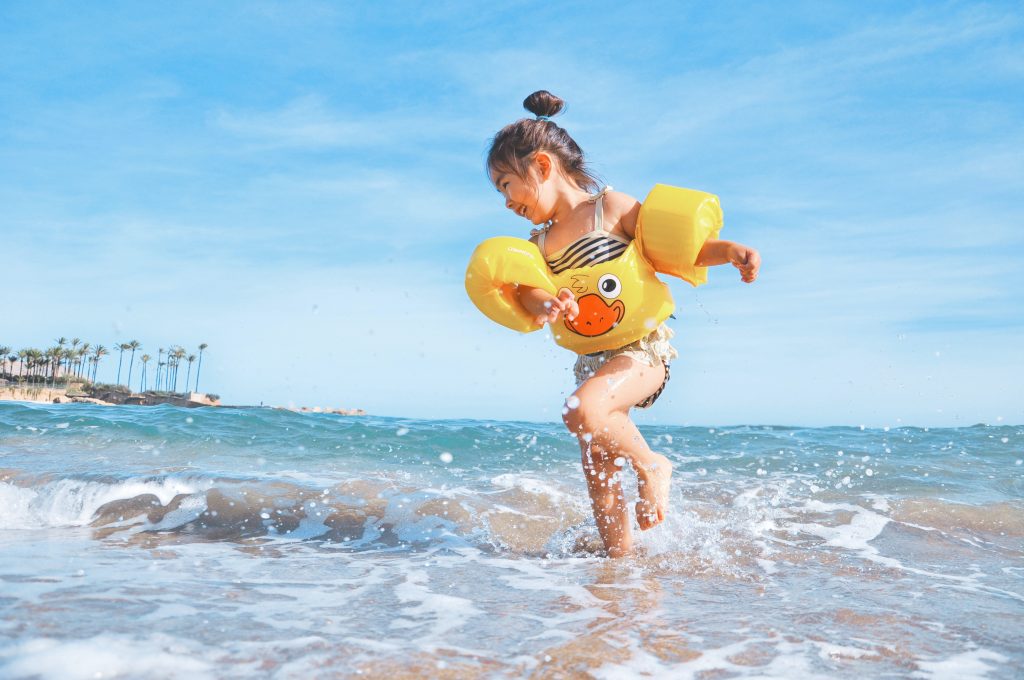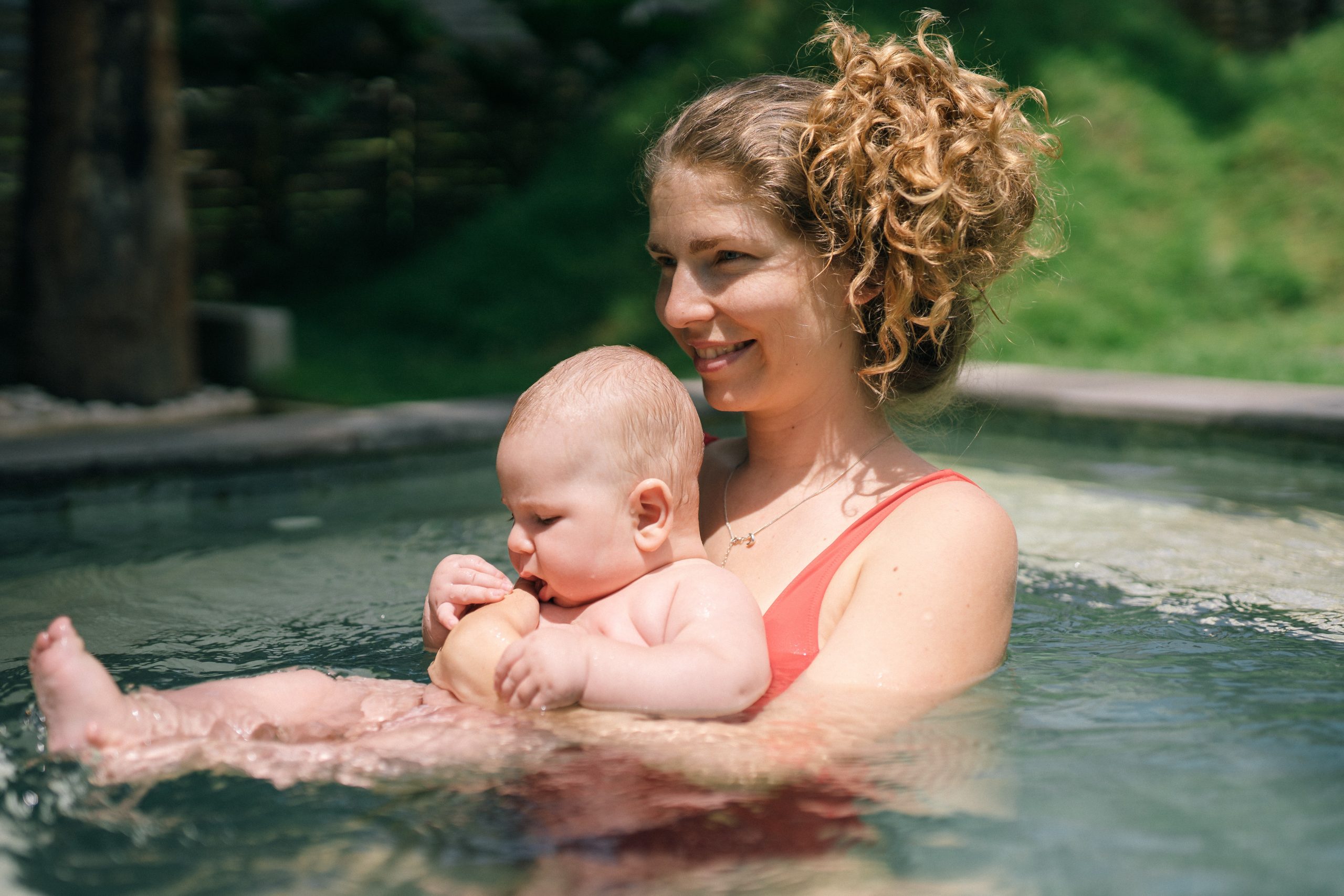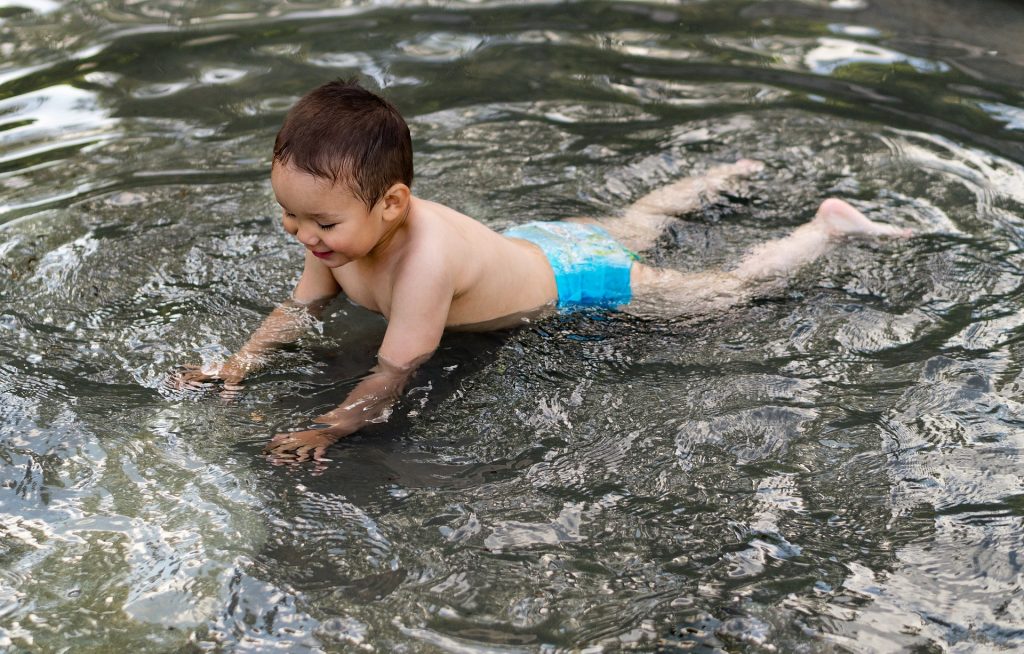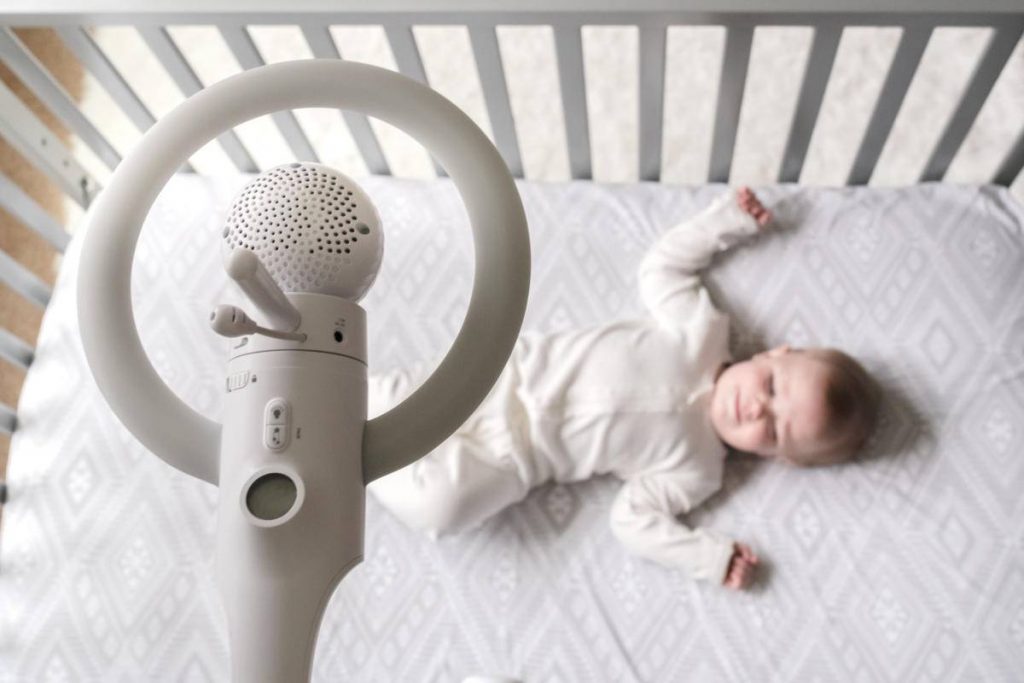During the warmer months, people are more likely to cool off by swimming in swimming pools, lakes, rivers, and on beaches. While cooling off in the water is a great option, it's crucial to remember aquatic safety precautions. Should parents be concerned that dry drowning and secondary drowning have received increasing attention in the media recently?
It's difficult not to worry after hearing stories like this one, in which a child appears to be well after exiting a body of water, only to lose consciousness and drown minutes or hours later. But it's not quite that easy, or frightening.
Dry drowning and secondary drowning: how common are they, and how may they be avoided?
It's human nature to panic and inhale or gulp down water if you fall into the water, whether you're a youngster or an adult. Most of us would think the danger has passed once the person has been pulled from the water.
However, after taking in water, your windpipe muscles may tighten to prevent water from entering your lungs. This condition has been called "dry drowning" by some, albeit this is not a medical name or diagnosis. Post-immersion syndrome is a real medical condition that can occur after a prolonged underwater experience.
When it comes to dry drowning, kids are the most common victims. Although ninety-five percent of kids are fine after a near-drowning incident, you should still keep an eye out for any signs of drowning even if your kid seems to be fine. If someone is experiencing dry drowning, they need immediate medical assistance.
You keep a tight eye on your children while they splash around in the pool or the ocean. Never leave your children unattended near water of any kind, not even the bathtub, and you always have a lifeguard on duty. The correct action is to do that. But there's more you can do to ensure their safety: study the post-diving danger signals and develop an action plan.
Experts agree that drowning occurs when water enters the airways and makes breathing difficult. This is something that occasionally occurs in the water. However, being dipped or drinking a glass of water might also cause this.
It can be lethal, but not always. If help arrives quickly enough, you can survive a drowning.
The phrase "dry drowning" is now archaic. Some use it to describe cases where someone died after ingesting liquid but showed no symptoms of respiratory distress prior to death.
After years of research into breathing capacity and drowning injuries, the medical community mainly stopped using the term.
The term "dry drowning" is often used nowadays to describe situations in which submersion in water causes the voice box to spasm and close, preventing normal breathing and other essential processes.
This page will describe dry drowning, including its symptoms, causes, and when medical help should be sought.
Check out our range of baby nursery products and furniture for all your baby needs.
What Is Dry Drowning?
In the past, "dry drowning" was a term used to describe cases where a person had died more than 24 hours after ingesting or inhaling fluids but had shown no symptoms of respiratory distress.
The usage of this phrase is now generally discouraged by medical authorities and organisations.
There is currently no accepted phrase to replace "dry drowning" among medical professionals. Some people talk about "post-immersion syndrome" or, less frequently, "delayed drowning."
Dry drowning is a term used occasionally today by scientists and doctors to describe situations in which the voice box responds to liquid by spasming and closing.
Spasms in the larynx make it hard to breathe because they cause the vocal folds to close. It may be hard to get air into the lungs, and fluids may leak into unintended areas like the sinuses.

Secondary Drowning Vs. Dry Drowning
Accidental injuries that occur while swimming can lead to both dry drowning and secondary drowning. Within an hour of inhaling water, you will begin to dry and drown. However, secondary drowning, albeit extremely rare, can occur up to 48 hours following a water mishap (reliable source).
Water in the lungs is the leading cause of secondary drowning. As it involves water entering your lungs, it's more analogous to "actual" drowning. As a result, the water makes it hard to take a deep breath. In addition to being potentially lethal, dry drowning and secondary drowning are also serious medical disorders.
When a person's air supply is cut off below the water's surface or another liquid, drowning occurs.
The primary airways in the lungs spasm and close off when a person is drowning due to injury from the fluids and the resulting damage to the lungs. Drowning is fatal because the body is deprived of oxygen.
Before the medical profession had the appropriate diagnostic instruments to examine breathing, some clinicians used the words "wet drowning" and "dry drowning."
Once it was understood that drowning is caused by hypoxia rather than water saturation, the two terms were merged into one: drowning.
Dry drowning used to be a term used to describe situations when additional circumstances, such as:
- there were no warning signals of oxygen deprivation or issues with breathing.
- very little or no moisture in the lungs
- Nobody knew if the victim had ingested, breathed, or been submerged in liquid.
Today's medical professionals are aware that if even a small amount of water gets into a patient's lungs, it could be fatal. The Surfer's Medical Association suggests as little as 2 millilitres of water per kilogramme of body weight.
Some academics and medical professionals will still use the term "dry drowning" on occasion. When they do, it usually means that water or some other liquid has caused a spasm in the vocal folds and the voice box. It is possible for a deadly reduction in airflow to occur during a particularly severe spasm.
In addition to the term "dry drowning," the following are also considered medically erroneous and are therefore discouraged by health authorities and organisations:
Symptoms Of Dry Drowning And What To Do
The silver lining: you will be presented with early warning indicators
Keep an eye out for these warning signs of dry drowning in children of all ages, from infants to preteens:
- Water rescue. All children rescued from pools should be evaluated by medical professionals. You should probably contact a paediatrician.
- Coughing. Evaluation is necessary if you have a persistent cough or a cough that causes you to have to work harder to breathe.
- An increase in the "effort required to breathe." When a youngster is exerting more effort than usual to breathe, you can tell by the frequency and shallowness of their breathing, any flaring of the nostrils, and the visibility of the space between their ribs or the space above their collarbone. You should get medical attention right away if you experience this.
- Sleepiness. Why is your child so tired when she was just having a great time in the pool? It may indicate that her blood is not receiving enough oxygen. Wait for the okay from the doctor before putting her to bed.
- loss of memory or a sudden shift in personality. Your kid can feel queasy or lightheaded if the oxygen level drops.
- We just threw up. The body's response to the stress of inflammation and, in some cases, a shortage of oxygen, as well as to prolonged coughing and gagging, is vomiting.
Whether you are at home with your own pool or on vacation at the beach, if you are worried that your kid may be experiencing symptoms of a submersion injury, you should contact your child's paediatrician immediately. The paediatrician on call can advise you on whether to take your child to the emergency room, a regular doctor, or an urgent care centre.
If your child is having trouble breathing, though, you should get him or her to a hospital or emergency room immediately. The emergency room is often the only place where patients can get the care they need.
Looking for the perfect baby nursery cot? Look no further! My Baby Nursery has the ultimate list of best baby cots for you to choose from.
Treatment For Dry Drowning
Dry drowning is a medical emergency that requires immediate attention from emergency services, so ring 911 if you observe the signs.
Keep yourself or your child as calm as possible throughout the laryngospasm. Maintaining composure helps hasten the process of muscular relaxation in the windpipe.
When medical personnel arrive to assist with an emergency, treatment will be given there. If an individual has collapsed from lack of oxygen, resuscitation may be necessary.
It is planned to take the patient to the hospital for further observation after they have stabilised. Dry drowning symptoms after a submersion occurrence require medical supervision to ensure normal breathing has resumed and to rule out other illnesses, such as subsequent drowning or bacterial pneumonia. The presence of water in the lungs can be ruled out with a chest X-ray or the help of a pulmonary specialist.
Anyone who knows how to do so should begin cardiopulmonary resuscitation (CPR) on someone who appears to be lacking oxygen or may have drowned, and then ask someone else to phone for aid.
When a patient arrives at the ER, medical personnel will typically conduct a battery of tests to establish the severity of the patient's breathing difficulty. Vital signs including heart rate, temperature, and oxygen levels will also be checked by the doctors.
If a patient's vitals are normal, they will often be monitored for four to six hours before being discharged from the emergency room. If not, the patient will be admitted to the hospital for more extensive observation and treatment.
FAQs About Dry Drowning
The signs and symptoms of dry drowning start practically immediately after an episode involving drowning. Still, the signs and symptoms of secondary drowning can start anywhere from one to twenty-four hours after water enters the lungs.
Symptoms may include chest pain, coughing, vomiting, fever, diarrhoea, difficulty breathing, and fatigue. Other symptoms may include difficulty breathing and vomiting.
After breathing in water for less than an hour, a person will experience dry drowning. However, secondary drowning, which is also rather uncommon, can occur up to forty-eight hours following an incident involving water. Water accumulation in the lungs is the primary contributor to secondary drowning.
This intake of water, also known as aspiration, may be immediately demonstrated. It occurs with a brief bout of coughing or gasping for air. The initial round of coughing may stop after a few moments. However, over the next few hours, the damage caused by the trace amount of water that enters the lungs will begin to become apparent.
Fortunately, the illness that the general public refers to as "dry drowning" is quite unusual. Nevertheless, parents of children affected by the ailment will typically notice signs that drive them to seek medical assistance for their kids.
Treating Dry Drowning
It is possible to prevent both morbidity and mortality as long as the process of drowning is prevented from continuing unabated between the initial inhalation of water and the moment of death. With the correct apparatus, it is possible to extract water from the airway and prevent more water inhalation.
Preventing Dry Drowning
Drowning, including dry drowning, is a leading cause of death among infants and toddlers. However, you can lessen the likelihood of drowning by avoiding water-related mishaps wherever possible.
Any time a youngster younger than two is submerged in water, the chance of drowning increases dramatically. Take a child to the hospital immediately if they are in danger of drowning, even if they were only submerged for a few minutes.
The following safety guidelines should be kept in mind when caring for young children:
- Children under the age of four should always be accompanied by an adult while near any body of water. The bathroom tub counts as well.
- Never allow a child under the age of four to swim or take a bath unsupervised.
- Everyone on board the boat, regardless of age, should wear a life jacket at all times.
- If you often act as pool or beach supervisor, you might consider completing an infant CPR course.
- Spend some money on swimming lessons for you and your kids.
- Keep the pool gates locked at all times.
- Don't go swimming or playing in the sand without an adult supervising the area.
What To Do If Dry Drowning Or Secondary Drowning Occurs

These syndromes have warning signals, and if they manifest, it is usually after a near-drowning experience. Closely monitor your child for signs of dry drowning or secondary drowning after a near-drowning incident.
The paediatrician should be contacted if you suspect dry drowning or secondary drowning in your child. They will know what to do and if you need to go to the hospital.
After Dry Drowning, Can A Child Swim Again?
Due to the rarity of this illness, information regarding its recurrence is scarce. Before deciding to dive back into water sports or enter the water again, it's important to have a serious conversation with your doctor about the benefits, hazards, and safety measures you need take.
Noncardiogenic pulmonary edoema is a disorder that has many potential causes, including but not limited to anaesthesia, infections, and some drugs.
If a parent or child ever needs surgery, a medical procedure, or hospitalisation, they should make their doctors aware of any prior experiences with drowning.
The Centers for Disease Control and Prevention (CDC) report that drowning is still the third top cause of accidental death overall and the third leading cause of accidental death for children under the age of 14. There are around ten drowning deaths every day, for a total of about 3,500 drowning deaths per year.
There are two main causes of drowning, but both involve a lack of oxygen reaching the lungs as a result of being submerged in water.
There are two possible outcomes for persons who face a drowning situation. Panic, excitement, and a need for air will trigger automatic responses. And when you have no choice but to take a breath underwater, water will flood into your lungs. Half the time, this is the case.
When the speech box closes off, that's the other kind of drowning. It's a reflex that happens to stop fluid from entering the lungs, and it's called a laryngospasm. If you're underwater and hold your breath long enough, you could drown.
He clarifies that choking on water in the water doesn't count as drowning. Drowning occurs when a person's air supply is cut off. Some people confuse this with actually ingesting water when swimming, which can cause stomach distress. This is not, by itself, a true drowning event, even if it occurs at the same time as water entering the lungs.
If a child is in a pool and begins to cough and sputter, it's probably because they've swallowed a large amount of water and some of it has made its way into their lungs. However, the physical form is surprisingly perceptive. It will make its own attempts to acquire the necessary fluid. The cough serves this purpose as the body's natural defence mechanism. Coughing helps empty the lungs of any water that may have been aspirated.
He suggests seeking medical attention if the incident lasts too long or if the person appears to be in distress. It doesn't matter if it's been 30 minutes or a week since you've been in the water; if you get symptoms of respiratory dysfunction like a persistent cough or difficulty breathing, you should always consult a doctor.
Check out our post on Do you leave your baby to play alone?
The Best Prevention
Keep a sharp look out for kids near water and educate yourself on the warning signs of drowning.
Being aware of the dangers of drowning and taking measures to avoid them is our best course of action. This requires adults to be attentive and keep a close eye on their children at all times without being preoccupied with other activities like cooking, cleaning, reading, or using their phones. Which implies someone is keeping an eye on the water at all times.
Drowning can occur in a relatively small amount of water for young toddlers. He warns that children should not be left unattended near any body of water, including hot tubs, bathtubs, and even buckets of water.
The term "dry drowning" has fallen out of use and is now commonly misunderstood. It's been used by some to describe the difficulty breathing that comes from having liquid cause the voice box to spasm.
The prognosis for victims of dry drowning varies according to the severity of their injuries and other symptoms. A person's injuries and likelihood of dying increase the longer they go without air.
If a person shows symptoms of trouble breathing or a lack of oxygen, receiving medical care immediately will increase their chance of survival.
When around water, whether it be a pool, hot tub, beach, or any other body of water, adults should always take extra precautions to ensure the safety of children.
When dry drowning symptoms first appear, get medical attention right away for the best chance of a full recovery with no long-term damage.
Careful monitoring of symptoms following a water mishap is the single most critical factor in ensuring a positive outcome. As soon as you notice any of these signs, dial 911 immediately. Waiting it out is not a good idea.
You shouldn't have to continually worry about dry drowning or secondary drowning as long as you practise water safety, watch your kids closely after swimming, and get them checked out if you observe signs of difficulties breathing (submersion injuries).
Conclusion
Dry and secondary drowning have been covered more in the media lately. Post-immersion syndrome is a medical condition that can occur after lengthy underwater time. Even though 90% of kids survive near-drowning, watch for indications of drowning. Dry drowning occurs when a liquid-induced spasm closes the voice box. Larynx spasms constrict the vocal folds, making breathing difficult.
Drowning kills due to oxygen deficiency. "Dry drowning" meant no visible evidence of oxygen deficiency or breathing difficulty. Today's doctors know that inhaling even a little water is harmful. Emergency personnel must respond quickly to dry drowning. Dry drowning kills toddlers.
Pulmonologists and chest X-rays can rule out lung water. Drowning is the third leading unintentional mortality for children under 14. About 3,500 drown annually, 10 per day. Near-drownings precede drowning syndromes, which have warning symptoms. Panic, excitement, and breathing will trigger automatic responses.
Holding your breath underwater can cause drowning. Coughing expels aspirated water. The body will collect vital fluids. "Dry drowning" is no longer understood. Dry drowning victims' prognoses vary depending on their injuries and other symptoms. Seek quick medical attention to improve your chances of a full recovery without irreversible damage.
Content Summary
- While cooling off in the water is a great option, it's crucial to remember aquatic safety precautions.
- When it comes to dry drowning, kids are the most common victims.
- Although ninety-five per cent of kids are fine after a near-drowning incident, you should still keep an eye out for any signs of drowning even if your kid seems fine.
- If someone is experiencing dry drowning, they need immediate medical assistance.
- You keep a close eye on your children while they splash around in the pool or the ocean.
- Never leave your children unattended near water, not even the bathtub, and you always have a lifeguard on duty.
- After years of research into breathing capacity and drowning injuries, the medical community stopped using the term.
- The term "dry drowning" is often used nowadays to describe situations where water submersion causes the voice box to spasm and close, preventing normal breathing and other essential processes.
- This page will describe dry drowning, including its symptoms, causes, and when medical help should be sought.
- In the past, "dry drowning" was a term used to describe cases where a person had died more than 24 hours after ingesting or inhaling fluids but had shown no symptoms of respiratory distress.
- The usage of this phrase is now generally discouraged by medical authorities and organisations.
- There is currently no accepted phrase to replace "dry drowning" among medical professionals.
- Dry drowning is a term occasionally used today by scientists and doctors to describe situations in which the voice box responds to liquid by spasming and closing.
- Water in the lungs is the leading cause of secondary drowning.
- In addition to being potentially lethal, dry drowning and secondary drowning are also serious medical disorders.
- Dry drowning used to be a term used to describe situations when additional circumstances, such as there were no warning signals of oxygen deprivation or breathing issues.
- Some academics and medical professionals will occasionally use the term "dry drowning".
- In addition to the term "dry drowning," the following are also considered medically erroneous and therefore discouraged by health authorities and organisations: The silver lining is that you will be presented with early warning indicators. Keep an eye out for these warning signs of dry drowning in children of all ages, from infants to preteens: Water rescue.
- Medical professionals should evaluate all children rescued from pools.
- You should get medical attention right away if you experience this.
- Whether you are at home with your pool or on vacation at the beach, if you are worried that your kid may be experiencing symptoms of a submersion injury, you should contact your child's paediatrician immediately.
- The paediatrician on call can advise you on whether to take your child to the emergency room, a regular doctor, or an urgent care centre.
- If your child has trouble breathing, you should immediately get them to a hospital or emergency room.
- Dry drowning is a medical emergency that requires immediate attention from emergency services, so ring 911 if you observe the signs.
- Keep yourself or your child as calm as possible throughout the laryngospasm.
- Take a child to the hospital immediately if they are in danger of drowning, even if they were only submerged for a few minutes.
- The following safety guidelines should be considered when caring for young children: Children under four should always be accompanied by an adult while near any water.
- Never allow a child under four to swim or take a bath unsupervised.
- Spend some money on swimming lessons for you and your kids.
- Closely monitor your child for signs of dry or secondary drowning after a near-drowning incident.
- They will know what to do and if you need to go to the hospital.
- Before diving back into water sports or entering the water again, you must have a serious conversation with your doctor about the benefits, hazards, and safety measures you need to take.
- The Centers for Disease Control and Prevention (CDC) report that drowning is still the third top cause of accidental death overall and the third leading cause of accidental death for children under 14.
- It doesn't matter if it's been 30 minutes or a week since you've been in the water; if you get symptoms of respiratory dysfunction like a persistent cough or difficulty breathing, you should always consult a doctor.
- Keep a sharp lookout for kids near water and educate yourself on the warning signs of drowning.
- Knowing the dangers of drowning and taking measures to avoid them is our best course.
- The term "dry drowning" has fallen out of use and is now commonly misunderstood.
- The prognosis for victims of dry drowning varies according to the severity of their injuries and other symptoms.
- If a person shows symptoms of trouble breathing or a lack of oxygen, receiving medical care immediately will increase their chance of survival.
- When around water, whether it be a pool, hot tub, beach, or any other body of water, adults should always take extra precautions to ensure the safety of children.
- When dry drowning symptoms first appear, get medical attention immediately for the best chance of a full recovery with no long-term damage.
- Careful monitoring of symptoms following a water mishap is critical in ensuring a positive outcome.
- You shouldn't continually worry about dry or secondary drowning as long as you practise water safety, watch your kids closely after swimming, and get them checked out if you observe signs of difficulty breathing (submersion injuries).






